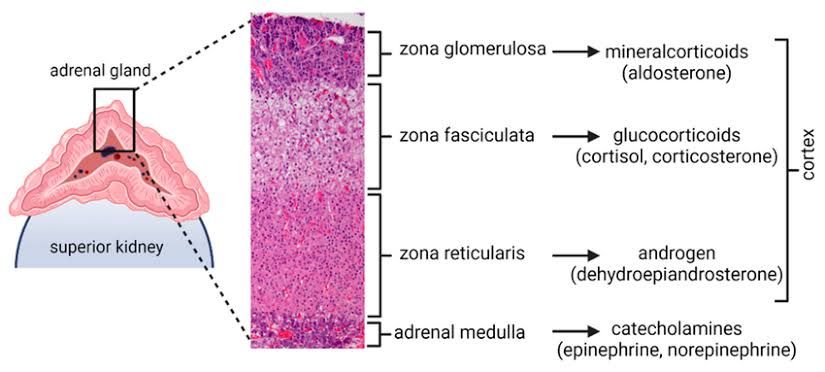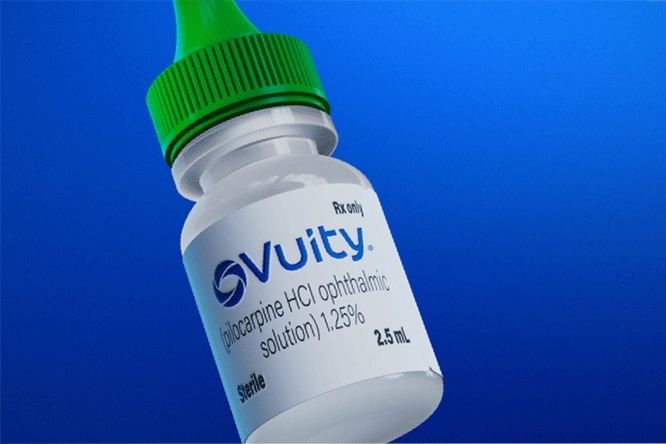
Pharmacology of Mineralocorticoids
Pharmacokinetics
Mineralocorticoids, primarily aldosterone, are steroid hormones produced by the adrenal cortex. Their pharmacokinetics can be characterized by their absorption, distribution, metabolism, and excretion:
- Absorption: Mineralocorticoids are typically administered orally or intravenously. When taken orally, they are well absorbed in the gastrointestinal tract. The bioavailability of oral mineralocorticoids varies; for example, fludrocortisone has a bioavailability of approximately 90%.
- Distribution: Once in circulation, mineralocorticoids bind to plasma proteins such as albumin and corticosteroid-binding globulin (CBG). This binding affects their distribution and availability at target tissues. The volume of distribution is relatively large due to their lipophilic nature.
- Metabolism: Mineralocorticoids undergo hepatic metabolism primarily through conjugation with glucuronic acid and sulfation, leading to inactive metabolites. Aldosterone itself has a half-life of about 20 minutes but is rapidly metabolized in the liver.
- Excretion: The metabolites are excreted via the kidneys into urine. The renal clearance of mineralocorticoids is influenced by kidney function and can vary significantly among individuals.
Mechanisms of Action
Mineralocorticoids exert their effects primarily through the mineralocorticoid receptor (MR), which is found in various tissues including the kidneys, colon, salivary glands, and sweat glands:
- Receptor Binding: Upon entering target cells, mineralocorticoids bind to MR in the cytoplasm. This complex then translocates to the nucleus where it influences gene transcription.
- Gene Regulation: The activated MR regulates genes involved in sodium reabsorption and potassium secretion in the distal nephron of the kidneys. Key genes include those encoding epithelial sodium channels (ENaC) and sodium-potassium ATPase pumps.
- Physiological Effects: The primary physiological effect of mineralocorticoids is increased sodium reabsorption and potassium excretion in renal tubules, leading to water retention and increased blood volume. This mechanism plays a crucial role in regulating blood pressure and electrolyte balance.
- Secondary Effects: In addition to renal actions, mineralocorticoids also influence cardiovascular function by promoting vascular smooth muscle contraction and affecting cardiac remodeling processes.
Adverse Reactions
While mineralocorticoids are essential for maintaining fluid balance and blood pressure regulation, they can also lead to several adverse reactions:
- Hypertension: Excessive activation of MR can cause hypertension due to increased sodium retention leading to expanded blood volume.
- Hypokalemia: Increased potassium excretion can result in hypokalemia (low potassium levels), which may cause muscle weakness, arrhythmias, or other cardiac issues.
- Edema: Fluid retention from enhanced sodium reabsorption can lead to peripheral edema or pulmonary edema in susceptible individuals.
- Metabolic Effects: Long-term use may contribute to metabolic syndrome features such as insulin resistance or dyslipidemia due to alterations in glucose metabolism.
- Osteoporosis Risk: Chronic exposure may increase bone resorption leading to osteoporosis over time due to calcium loss from bones.
- Psychiatric Effects: Some patients may experience mood changes or psychiatric symptoms associated with long-term corticosteroid therapy.
In summary, while mineralocorticoids play vital roles in homeostasis through their pharmacological actions on electrolyte balance and blood pressure regulation, careful monitoring for adverse effects is essential during treatment.
Synthetic Analogs of Mineralocorticoids and Their Routes of Administration
Synthetic analogs of mineralocorticoids have been developed to mimic these effects for therapeutic purposes, particularly in conditions such as adrenal insufficiency, orthostatic hypotension, and certain types of edema.
Common Synthetic Analogs
- Fludrocortisone
- Fludrocortisone is one of the most commonly used synthetic mineralocorticoids. It has potent mineralocorticoid activity with some glucocorticoid activity. It is primarily used in the treatment of conditions like Addison’s disease and postural orthostatic tachycardia syndrome (POTS).
- Desoxycorticosterone Acetate (DOCA)
- DOCA is another synthetic mineralocorticoid that acts similarly to aldosterone but is less commonly used today due to the availability of more effective alternatives. It is sometimes utilized in cases where fludrocortisone is not suitable.
- Aldosterone Analogues
- Various other synthetic analogs have been developed that aim to provide selective mineralocorticoid effects while minimizing glucocorticoid side effects. These include compounds like spironolactone and eplerenone, which are primarily known for their antagonistic properties but can also exhibit some agonistic effects under certain conditions.
Routes of Administration
The routes of administration for synthetic mineralocorticoids vary based on the specific compound and clinical indication:
- Oral Administration
- Fludrocortisone is typically administered orally in tablet form. The oral route allows for convenient dosing and consistent absorption, making it suitable for long-term management of conditions requiring mineralocorticoid replacement.
- Intramuscular Injection
- Desoxycorticosterone acetate can be administered via intramuscular injection. This route may be preferred in situations where rapid action is required or when oral administration is not feasible.
- Topical Administration
- While less common, there are formulations being explored that allow for topical application of certain mineralocorticoid analogs, particularly in research settings aimed at localized treatment without systemic exposure.
- Intravenous Administration
- In acute settings or severe cases where immediate effect is necessary, intravenous administration may be employed; however, this is not typical for chronic management.
Conclusion
Synthetic analogs of mineralocorticoids play a significant role in managing various medical conditions related to adrenal insufficiency and electrolyte imbalances. The choice of synthetic analog and its route of administration depend on the specific clinical scenario, patient needs, and desired pharmacological effects.
Rationale of Replacement Therapy of Mineralocorticoids
In conditions such as congenital adrenal hyperplasia (CAH), specifically the salt-wasting form due to 21-hydroxylase deficiency (21OHD), there is a significant impairment in aldosterone production. This deficiency leads to critical imbalances in electrolytes, resulting in hyponatremia (low sodium levels), hyperkalemia (high potassium levels), and potentially life-threatening adrenal crises.
Need for Replacement Therapy
The rationale for mineralocorticoid replacement therapy stems from the need to compensate for the lack of endogenous aldosterone production. In patients with salt-wasting CAH, adequate mineralocorticoid replacement is essential to:
- Maintain Electrolyte Balance: The primary goal of mineralocorticoid therapy is to restore normal sodium and potassium levels. Sodium retention helps prevent dehydration and supports blood volume, while potassium excretion prevents hyperkalemia.
- Prevent Adrenal Crisis: Patients with 21OHD are at risk of adrenal crisis due to severe electrolyte imbalances. By ensuring adequate mineralocorticoid levels through replacement therapy, the risk of acute circulatory collapse can be significantly reduced.
- Support Growth and Development: Particularly in infants and young children, proper electrolyte balance is vital for normal growth and development. Mineralocorticoid replacement helps ensure that these children can grow without the complications associated with electrolyte imbalances.
Dosing Considerations
The dosing of mineralocorticoids such as fludrocortisone must be carefully managed. Initial doses typically range from 100-200 μg/day, but adjustments are necessary based on clinical parameters such as blood pressure, serum sodium, potassium levels, and plasma renin activity (PRA). Research indicates that the demand for mineralocorticoids is higher during early infancy due to immature renal function and dietary factors; thus, doses may decrease over time as renal function matures.
Monitoring and Adjustments
Regular monitoring is critical in managing mineralocorticoid replacement therapy effectively. Clinicians should assess:
- Electrolyte Levels: Routine checks of serum sodium and potassium help guide dose adjustments.
- Blood Pressure: Monitoring ensures that patients do not develop hypertension or hypotension due to inappropriate dosing.
- Growth Parameters: Tracking growth can indicate whether the current treatment regimen supports healthy development.
Conclusion
In summary, the rationale behind mineralocorticoid replacement therapy in conditions like salt-wasting CAH is multifaceted: it addresses critical physiological needs related to electrolyte balance, prevents life-threatening complications associated with adrenal insufficiency, and supports overall growth and health in affected individuals.







